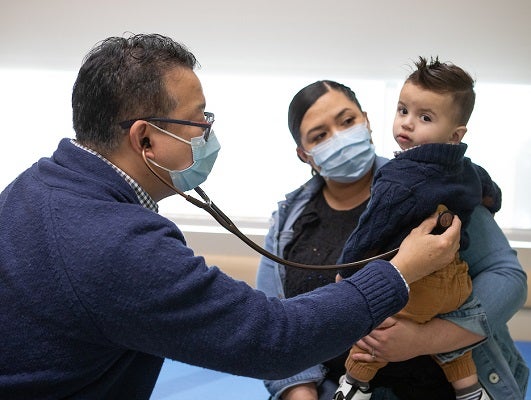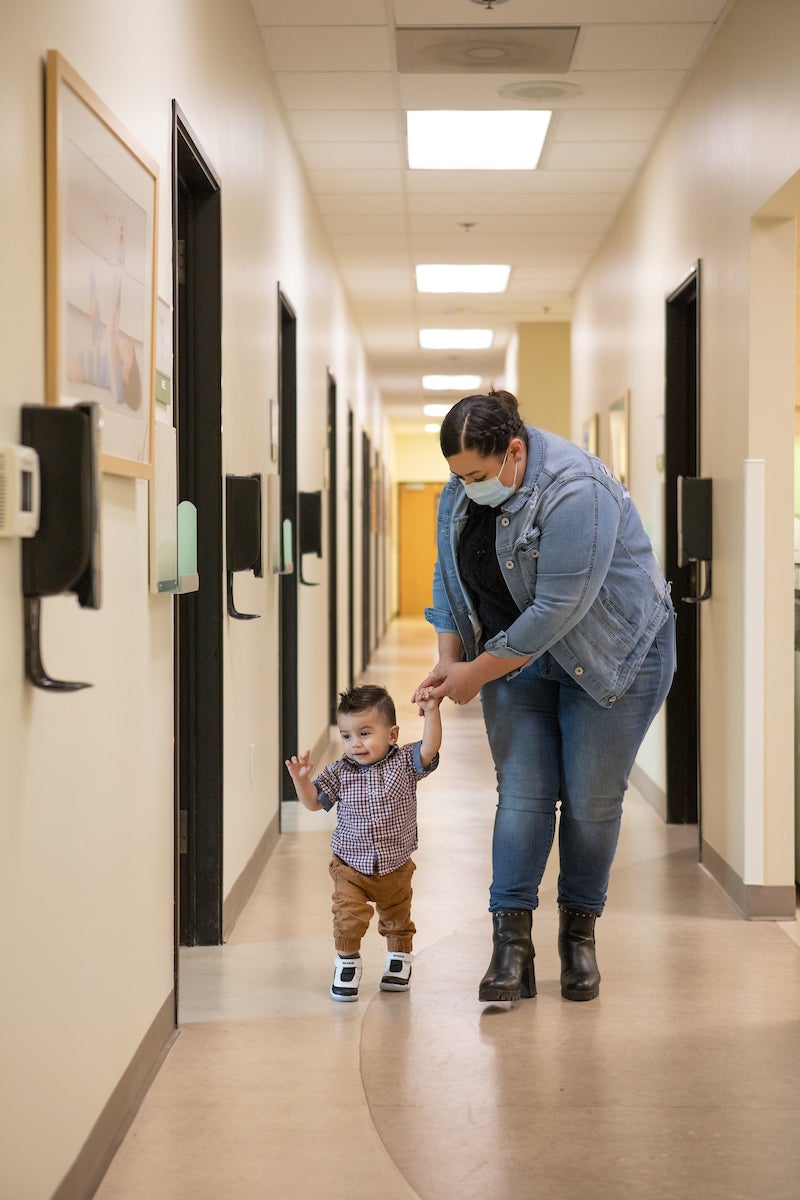One Big Step for Rafael, One Giant Leap for Spinal Muscular Atrophy
A mother and child walking hand in hand down a hospital hallway is a common sight across Valley Children’s.
The sight of mom Claribel and 13-month-old Rafael walking down the hallway in the neurology clinic was something altogether different.
Soon after birth, like every baby born in California, Rafael participated in the Newborn Screening Program (NBS), a public health program that screens all babies for many serious but treatable genetic disorders. The program began in 1966 with screening for one disorder, phenylketonuria (PKU), and has now expanded to include 80 different genetic and congenital disorders.
In 2020, after several years of advocacy by parents and organizations alike – including Valley Children’s – California officially added spinal muscular atrophy (SMA) to its newborn screening panel. And it is for this reason that Valley Children’s physicians were able to identify early on to diagnose Rafael with SMA.
“It is crucial for children with SMA to be diagnosed as early as possible,” said Dr. Raymund David, Valley Children’s pediatric neurologist and muscular dystrophy clinic lead. “An earlier diagnosis means earlier treatment – and earlier treatment can make a big difference in the quality of life for the patient because it means that fewer motor neurons will perish, which can slow the progression of the disease.”

Dr. David examines Rafael as Rafael's mother, Claribel, looks on
SMA is a neuromuscular disease that affects the motor nerve cells. It is caused by a deletion or mutation of the survival motor neuron gene 1 (SMN-1), a gene that produces a protein essential for nerve cells to function properly and control muscles. Without the SMN-1 protein, nerve cells become weakened and eventually die, leading to muscle weakness. This loss of muscle function does not impact cognitive ability, but includes losing the ability to eat, swallow, breath and move – which often leads to fatal outcomes.
“After his newborn screening results came back, we received a call from our Valley Children’s nurse,” shared Claribel. “She explained we needed to come in, went over everything we should expect and what we would be facing, and ensured we would have a compassionate care team there every step of the way.”

Rafael and his mother, Claribel, walk hand in hand down the hallway
There are five different types of SMA, each type based on the ages symptoms begin and the highest physical milestone anticipated. Based on research, Rafael was diagnosed with SMA type 2, which means an individual may be able to sit up without help and may need assistance getting into a seated position, but they are unable to walk and will require a wheelchair.
Today, Rafael is not only taking steps, but learning to walk on his own.
“Rafael is now not only taking steps, but learning to walk on his own, when we thought he wasn’t going to be able to do any of that,” said Claribel. “The team at Valley Children’s gave me everything I possibly needed, from support to resources, and made the entire unknown just run so smoothly. They’ve been so helpful and I’m just so thankful.”
“In the past, kids with SMA may not have been able to walk, or even sit,” explained Dr. David. “With today’s treatments, kids like Rafael are hitting important childhood milestones and it’s just truly amazing.”